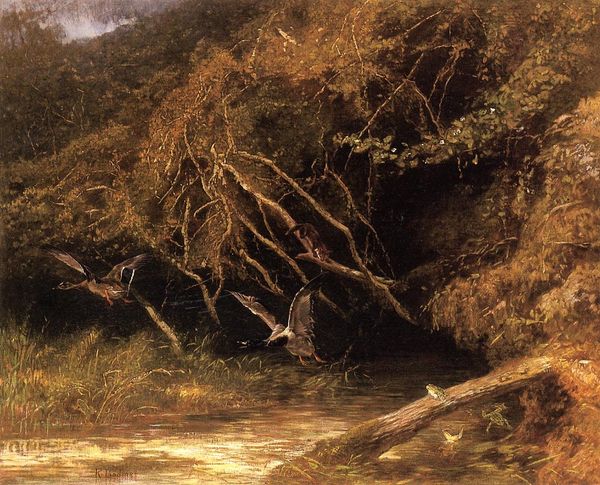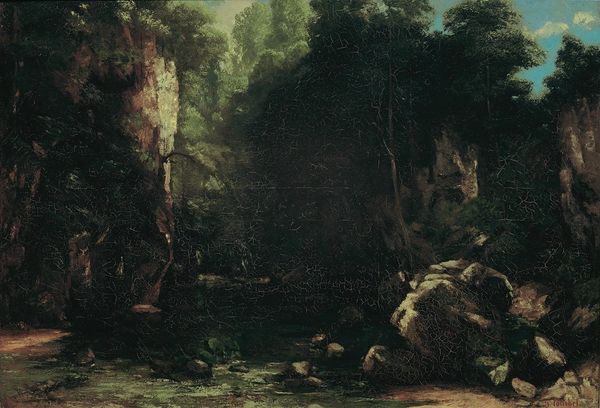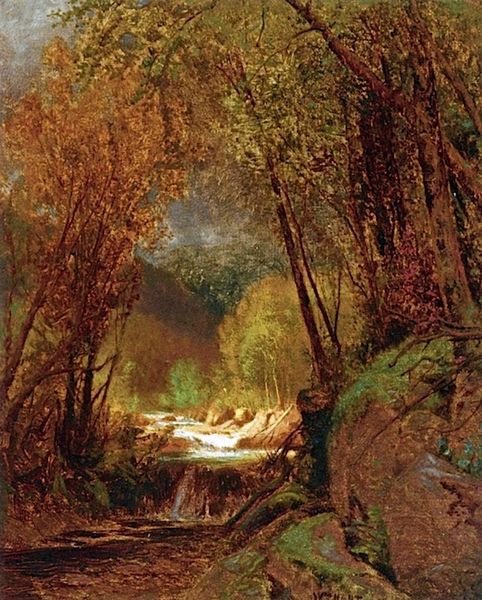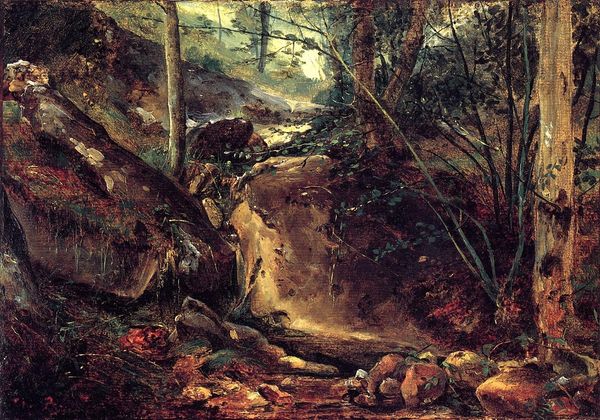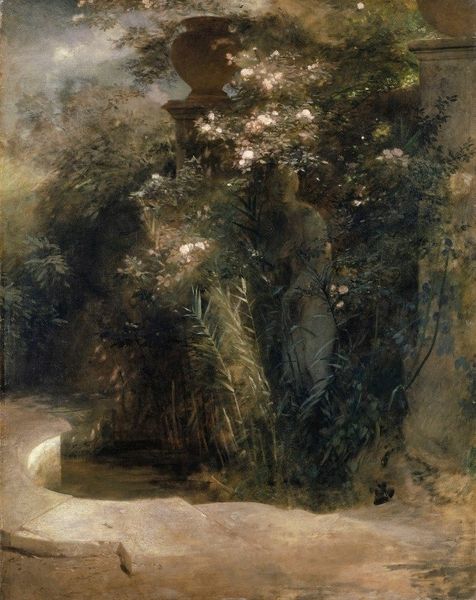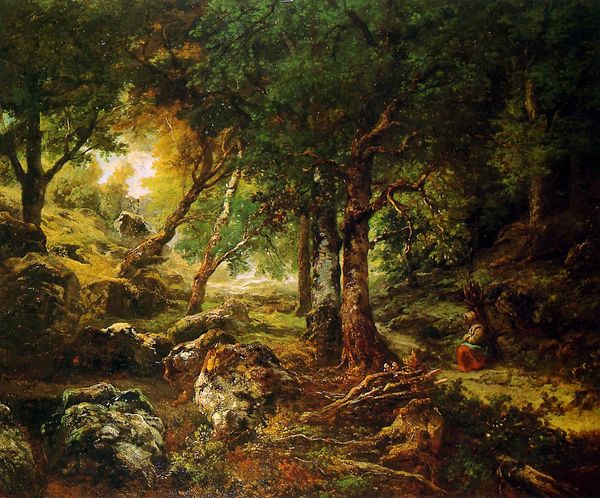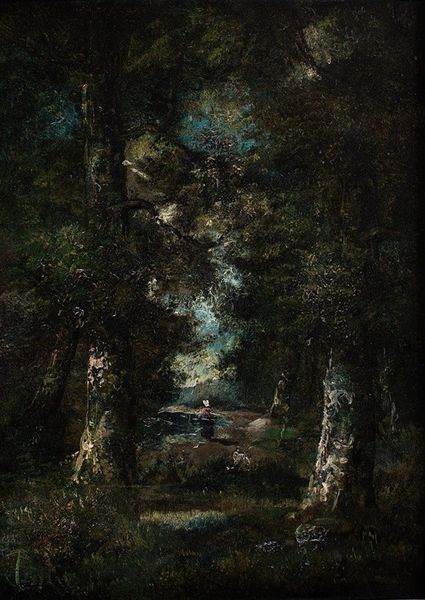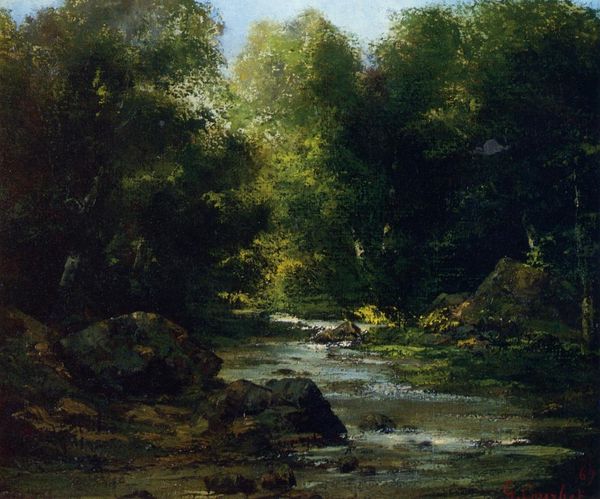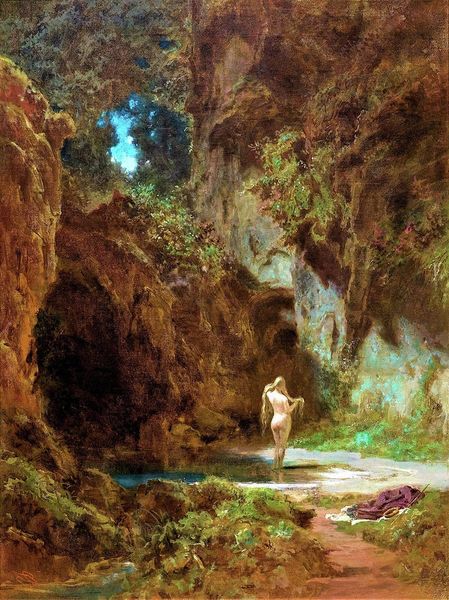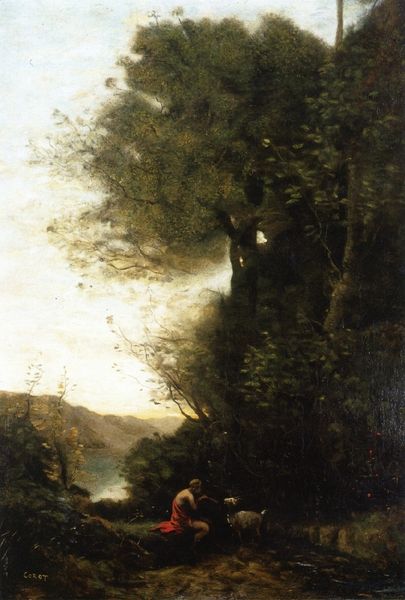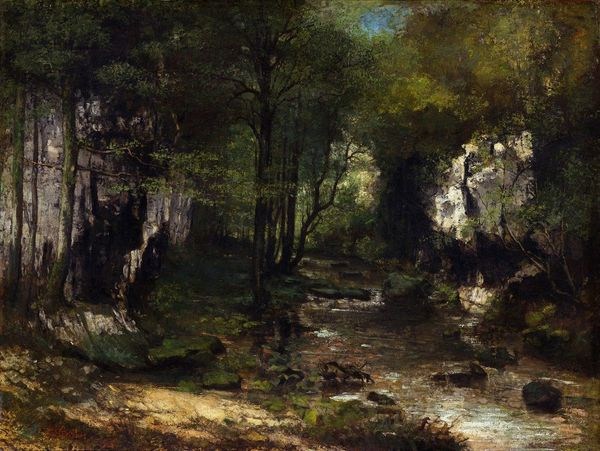
Dimensions: 40.7 x 54 cm
Copyright: Public domain
Curator: Stepping closer to this piece by Carl Spitzweg, created in 1873, titled "Bathing Nymphs," I’m immediately struck by its intimate and rather secretive atmosphere. It feels like stumbling upon a hidden world. What's your initial read? Editor: I’m seeing so much raw labor behind these layers. The way the oil paint has been manipulated, almost fighting the naturalistic subject. Spitzweg used these materials to cloak the scene in an aura of idealized, even fetishized, leisure. Look how the nymph’s skin appears almost luminous, a stark contrast against the darker, muddier earthy tones. Curator: Oh, I agree completely. It's the chiaroscuro effect that gets you, doesn’t it? A spotlight effect. It's so Romantic, that desire to unveil something hidden, a private moment of mythological figures caught unaware, that raw, almost voyeuristic feeling that maybe we shouldn’t be looking, but can’t help ourselves! And the way Spitzweg deploys these light effects certainly obscures the human element that, I suspect, sustained Spitzweg and his milieu... Editor: Exactly. We need to recognize the hands behind the production – the pigment-makers, the canvas-stretchers. Spitzweg couldn't conjure up these bathing nymphs without this extensive system of craft production. How were these materials sourced, what were the working conditions of the suppliers? What sort of workshops gave way to these painterly aesthetics and allowed this painting to become, quite frankly, an aesthetic of high leisure and feminine ideals? Curator: You make an interesting point. It prompts us to reflect on who gets to imagine these scenes and, indeed, who has access to this form of idealized beauty. Even the nymphs feel detached, almost sculptural in their stillness. They seem both present and eerily absent. Spitzweg's choice to use oil paint only highlights the social forces that came together to produce that stillness. He captures this one, ephemeral, yet eternal instant through material accumulation. Editor: Precisely, it's important to see beyond the dreamy mythological narrative. A piece like this really throws light on the artistic strategies needed to manufacture these Romantic myths—that tension between craft and idealized content remains highly relevant for contemporary practices, for contemporary creators and artists and curators. We must not see that kind of idealized life at face value, and question how it might still hide labor dynamics today! Curator: A perspective indeed worth embracing when pondering these painted "Bathing Nymphs"—thanks to Spitzweg's brush, a potent reminder to contemplate who is given center stage and at what cost.
Comments
No comments
Be the first to comment and join the conversation on the ultimate creative platform.

